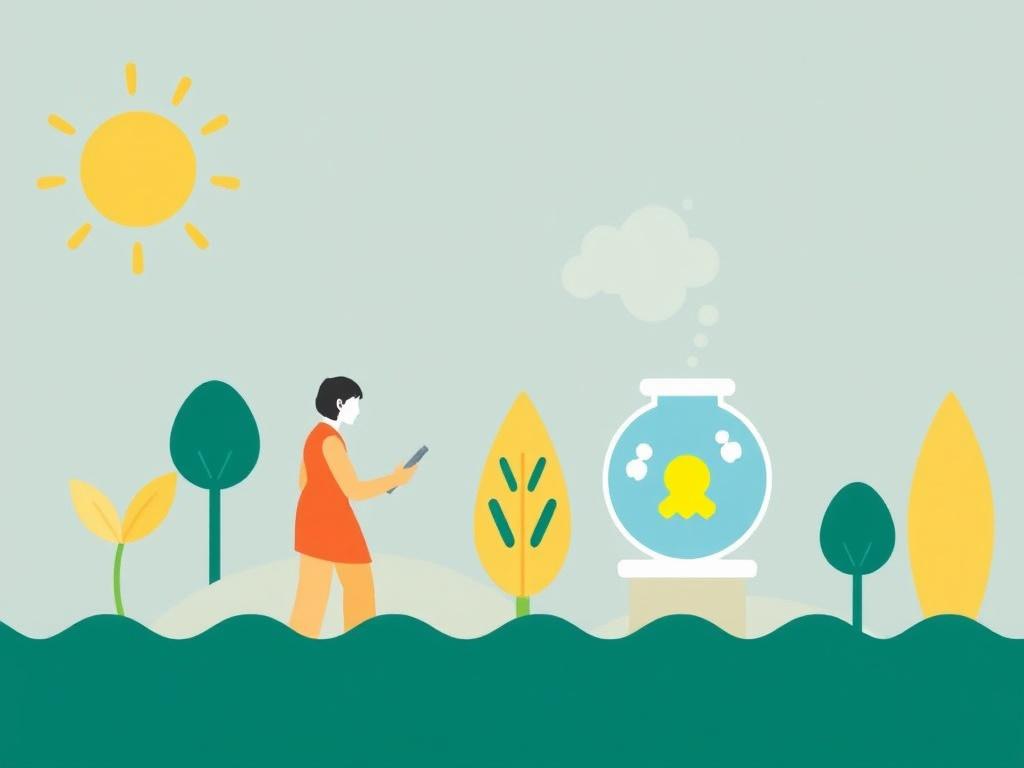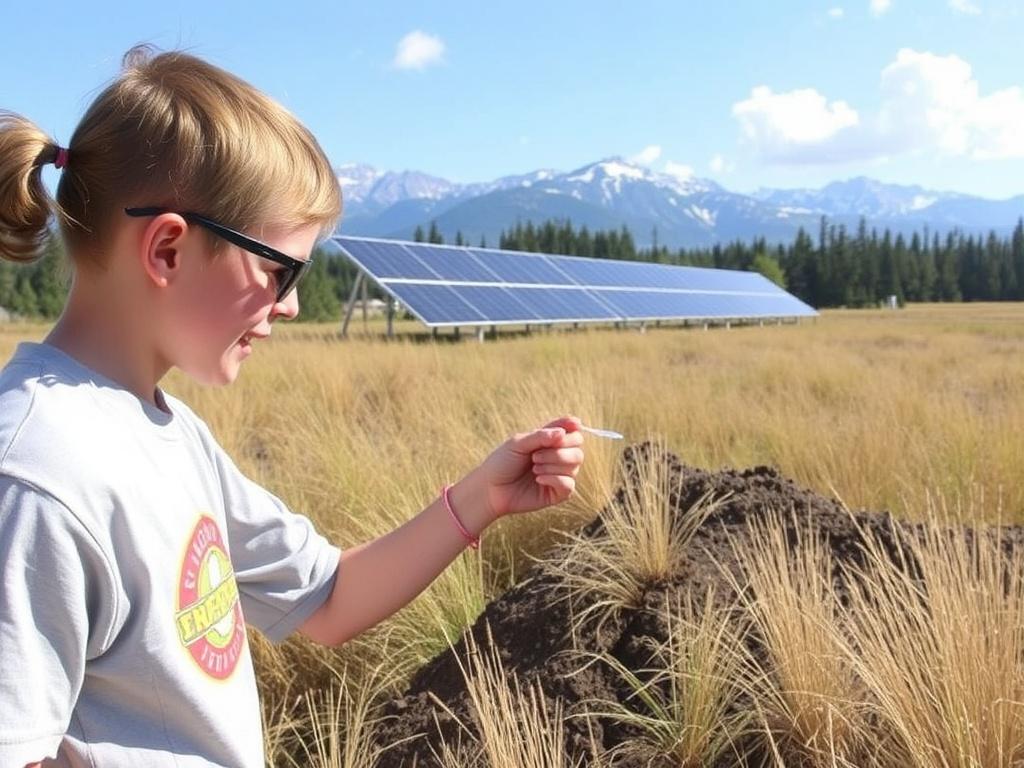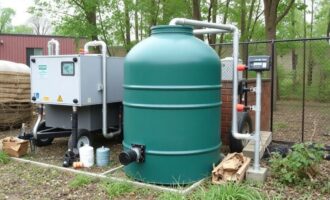- Why Citizen Science Matters for Energy Research
- Benefits for Researchers and Communities
- Real-world Examples of Impact
- Types of Citizen Science Projects in Energy
- Sensor Networks: Crowdsourced Environmental Data
- Behavior Change and Energy Literacy Projects
- Maker and DIY Projects: Innovating at the Edge
- How Citizen Science Projects Are Designed
- Choosing Tools and Platforms
- Protocols: Keep Them Simple
- Example Protocol Elements
- Data Quality: Challenges and Solutions
- Ethics, Privacy, and Governance
- Technology and Tools Powering These Projects
- Tools for Engagement and Education
- Case Studies: Success Stories from Around the World
- Solar Performance Mapping in Urban Neighborhoods
- Community Air Quality and Power Plant Monitoring
- Behavioral Trials Using Smart Devices
- How to Start or Join a Citizen Science Project
- For Researchers and Organizers
- For Citizens and Community Groups
- Practical Tips for Sustained Engagement
- Funding and Scaling: Making Projects Sustainable
- Metrics for Success
- Common Challenges and How to Overcome Them
- Managing Data Noise and Bias
- Policy Implications and the Role of Institutions
- Looking Ahead: The Future of Citizen Science in Energy
- Areas Ripe for Growth
- Resources: Where to Learn More and Get Involved
- Practical Checklist to Start a Small Neighborhood Project
- Final Thoughts Before You Begin
- Conclusion
Imagine a future where your everyday observations—your rooftop solar output, the way your neighborhood lights blink, the heat that radiates from pavement on a summer afternoon—help inform the next generation of energy policy and technology. That future is not a fantasy; it’s happening now through citizen science projects in energy research. These are initiatives where members of the public contribute data, insights, and energy to scientific efforts. They help researchers scale up data collection, test technologies in real-world settings, and ground scientific questions in lived experience. If you’ve ever wondered how your curiosity can help decarbonize the grid or make renewable energy more reliable, you’re in the right place.
This article will walk you through how citizen science works in energy research, why it matters, what kinds of projects exist, and how both researchers and everyday people can get involved. We’ll explore tools and methods, share success stories, highlight challenges like data quality and ethics, and outline practical steps to design or join a project. Whether you’re a student, engineer, policymaker, community organizer, or simply an interested homeowner, this guide is written to spark ideas and guide action.
Why Citizen Science Matters for Energy Research

Energy systems are vast, decentralized, and intensely local. A power line that trips in one town, a rooftop solar installation that underperforms, or the microclimates that affect wind turbines are all phenomena that happen on the ground. Traditional academic or industry research teams are limited by budget and geography. Citizen science expands the set of hands and eyes available—often at low cost—while also creating social buy-in and public literacy around energy issues.
There are several compelling reasons to support citizen science in energy research. First, it dramatically increases the volume and geographic spread of data. Second, it accelerates innovation by aggregating diverse perspectives and lived experience. Third, it builds trust: when communities participate in data collection and interpretation, they’re more likely to accept energy interventions. Finally, it democratizes science, opening the door to more equitable participation in the energy transition.
Benefits for Researchers and Communities
Researchers gain access to distributed sensor networks, longitudinal datasets from participants, and a cheaper way to test prototypes at scale. Communities gain knowledge, agency, and often direct benefits—lower energy bills, improved resilience, or a stronger voice in local planning. These mutual benefits make citizen science especially well-suited to topics that are socially salient and geographically diverse.
Real-world Examples of Impact
Consider projects that map household energy use to help low-income households identify efficiency opportunities, or community groups that monitor air quality near power plants to document health risks. In some cases, community-generated data has triggered regulatory investigations or helped secure funding for local infrastructure upgrades. These outcomes reinforce why citizen engagement isn’t just a nice add-on but a strategic advantage in energy research.
Types of Citizen Science Projects in Energy
Not all citizen science projects look the same. In energy research, you’ll find several common models depending on the research goals, the technical requirements, and the level of participant involvement. Below is a table summarizing common project types and what they involve.
| Project Type | Typical Participant Role | Tools/Tech | Research Goals |
|---|---|---|---|
| Sensor networks | Install and maintain sensors, upload data | Low-cost sensors, mobile apps, cloud platforms | Monitor energy flows, temperature, emissions |
| Observational reporting | Record observations or take photos | Smartphone apps, web forms | Track infrastructure issues, usage patterns |
| Behavioral experiments | Participate in trials, report outcomes | Smart thermostats, smart meters, surveys | Test energy-saving nudges and interventions |
| DIY hardware development | Build and test prototypes | Open-source hardware, maker spaces | Innovate low-cost solutions for local challenges |
| Data annotation and analysis | Label datasets, classify images or events | Web platforms (crowdsourcing sites) | Improve machine learning models, identify anomalies |
Sensor Networks: Crowdsourced Environmental Data
Sensor-based projects are among the most visible in energy-related citizen science. Participants install low-cost devices that measure things like rooftop solar performance, local temperature differentials, or harmonic distortion in the grid. Because these sensors can be distributed widely, they capture local variations that stationary, centralized monitors cannot. For instance, microclimates can affect solar productivity by a surprising amount; a network of sensors across a neighborhood can uncover such patterns and inform better siting or management decisions.
Behavior Change and Energy Literacy Projects
Other projects focus on behavior: changing how people use energy, not just measuring it. These initiatives use experiments—sometimes randomized—to test if certain messages, incentives, or interface changes reduce consumption. Participants might install a smart thermostat and observe energy consumption through an app while researchers test interventions. Beyond data, these projects improve energy literacy, helping participants understand their energy systems and carbon footprints.
Maker and DIY Projects: Innovating at the Edge
DIY and maker communities have been pivotal in inventing low-cost energy technologies. From home-built solar trackers to battery management systems assembled in community labs, these projects often push boundaries by focusing on affordability and practicality. They also serve as fertile ground for collaboration between hobbyists and researchers, mixing practical ingenuity with scientific rigor.
How Citizen Science Projects Are Designed
Designing a successful citizen science project in energy research requires careful planning: defining clear goals, choosing appropriate tools, ensuring data quality, addressing ethics and privacy, and designing for sustained engagement. Below are common design considerations and steps.
- Define research questions and success metrics
- Select the right platform and tools for data collection
- Create easy-to-follow protocols for participants
- Plan for data validation and quality assurance
- Address consent, privacy, and data sharing policies
- Design incentives and community engagement strategies
- Plan for long-term maintenance and funding
Choosing Tools and Platforms
Choice of tools depends on the scale and complexity of the project. For sensor networks, reliable hardware and data transmission methods are critical. For behavioral projects, interfaces that present feedback in an understandable way are essential. Open-source platforms often lower barriers to entry, but they require more technical support. Commercial platforms can offer smoother user experiences at higher cost. Researchers should weigh trade-offs between accessibility, scalability, and cost.
Protocols: Keep Them Simple
Protocols—how participants collect and submit data—should be simple, repeatable, and forgiving. Complex procedures increase error rates and discourage participation. Visual guides, short tutorial videos, and community workshops often work better than dense manuals. The goal is to reduce friction so participants can contribute reliably without becoming amateur scientists overnight.
Example Protocol Elements
A strong protocol typically includes what to measure, when and where to measure it, how to calibrate and maintain equipment, how to upload data, and how to troubleshoot common problems. Including context, like typical ranges for measurements, helps participants check if their sensors are working correctly.
Data Quality: Challenges and Solutions
One of the most common critiques of citizen science is the variability in data quality. Because contributors are non-specialists and equipment can be low-cost, the data often requires more cleaning and validation than professionally collected datasets. That said, there are tested strategies to mitigate these issues.
- Use redundancy: many sensors measuring the same thing can reveal outliers.
- Calibrate devices centrally or provide simple calibration steps for participants.
- Automate validation with algorithms that flag anomalies for review.
- Provide training resources and practice tasks to reduce user error.
- Use metadata: record who collected the data, with what equipment, and under what conditions.
Quality control is often a mix of automated checks and human review. Citizen science platforms sometimes use “trusted contributors” systems, where experienced participants’ data is weighted more heavily. Another emerging approach is hybrid studies that combine citizen-collected data with a smaller number of high-precision reference instruments for calibration.
Ethics, Privacy, and Governance
Energy data can be sensitive. Detailed household energy profiles can reveal daily routines, which raises privacy concerns. Responsible projects include robust consent processes, anonymization of personal data, and transparent governance about who can access the data and for what purposes. Community-led governance models, where participants help decide data use policies, can increase trust and participation.
Technology and Tools Powering These Projects
Technological advances have made citizen science in energy research more feasible and powerful. Low-cost sensors, pervasive smartphones, cloud computing, and open data platforms all play a role. Here are key technologies to know about.
- Low-cost environmental sensors (temperature, irradiance, current)
- Smart meters and smart plugs providing high-resolution consumption data
- Mobile apps and web portals for data collection and participant interaction
- Cloud storage and analytics for processing large datasets
- Machine learning models for anomaly detection and data cleaning
Open hardware kits and community workshops lower the barrier for non-experts to build and deploy sensors. Meanwhile, open-source software platforms allow researchers to share the tools they build, creating a virtuous cycle of reuse and improvement. The challenge is often integration: making sure sensors, apps, and servers can talk to each other reliably and securely.
Tools for Engagement and Education
Another class of tools focuses less on sensing and more on engagement: visual dashboards, simulation games that let participants explore energy scenarios, and interactive tutorials that teach participants about their energy use. These tools increase retention and help participants understand the meaning of their contributions.
Case Studies: Success Stories from Around the World
The theory is great, but what does success look like in practice? Below are a few illustrative case studies that show the diversity and potential of citizen science in energy research.
Solar Performance Mapping in Urban Neighborhoods
In several cities, researchers partnered with homeowners to deploy sensors that measure solar panel output and local irradiance. The resulting datasets revealed surprising micro-scale shading effects from trees, nearby buildings, and even seasonal atmospheric differences. Armed with this information, some neighborhoods optimized panel placement, trimmed obstructive branches, and changed maintenance schedules—improving energy yield and payback times.
Community Air Quality and Power Plant Monitoring
Community groups living near fossil fuel plants have used low-cost particulate monitors and NOx sensors to document pollution episodes. The aggregated data, combined with meteorological information collected by volunteers, helped make the case for stronger emission controls and more rigorous monitoring by regulators. This is an example where citizen science both advanced research and empowered community advocacy.
Behavioral Trials Using Smart Devices
Behavioral experiments that harness smart thermostats and smart plugs have tested how information and incentives change energy use. In some randomized trials, small nudges—like real-time feedback or social comparisons—reduced energy use by measurable percentages. These findings have practical implications for demand response programs and utility outreach strategies.
How to Start or Join a Citizen Science Project
Whether you want to start a project or join an existing one, there are practical steps to take. The key is to align goals, resources, and incentives so the project is both scientifically robust and attractive to participants.
For Researchers and Organizers
- Define a clear research question and success criteria.
- Engage stakeholders early: community organizations, local governments, utilities.
- Choose user-friendly tools and design simple protocols.
- Plan for ethical review and data governance.
- Pilot the project with a small group to identify issues.
- Scale gradually and invest in participant support and communication.
- Publish methods and datasets openly when possible.
For Citizens and Community Groups
- Identify what you want to learn or change in your community.
- Look for existing projects you can join; local universities and NGOs are good starting points.
- Ask about privacy, data use, and long-term commitments before joining.
- Volunteer to host sensors or participate in pilots—it’s a great way to learn.
- Share findings with neighbors and local officials to build momentum.
Practical Tips for Sustained Engagement
Keep contributions small and rewarding. People stay engaged when they see tangible benefits—reduced bills, visible impact, recognition in reports, or community improvements. Regular updates, leaderboards, and local meetups help build social ties that sustain long-term participation.
Funding and Scaling: Making Projects Sustainable

Sustaining a citizen science project requires money, time, and institutional commitment. Funding can come from a mix of research grants, local governments, foundations, and corporate sponsorships. Some projects monetize aggregated, anonymized datasets for commercial partners, but this approach raises ethical questions about who benefits from the data.
Scaling successful pilots requires robust operations: device maintenance, server costs, participant support, and data management. Designing for scale from the start—ensuring modular systems and clear documentation—reduces friction when projects grow.
Metrics for Success
Deciding whether a project is successful depends on the stated goals. Typical metrics include:
- Data volume and geographic coverage
- Data quality and completeness
- Scientific outputs: publications, models, and policy briefs
- Community outcomes: reduced bills, infrastructure improvements, or policy changes
- Participant retention and satisfaction
Common Challenges and How to Overcome Them
Citizen science projects face common hurdles: participant dropout, sensor failure, data noise, and ethical concerns. Below are practical strategies to address them.
- Reduce friction: simplify tasks and provide rapid feedback.
- Build redundancy: multiple sensors and repeated measurements help identify errors.
- Provide clear benefits: make participation useful to volunteers (education, savings, recognition).
- Maintain transparency: be explicit about data use and governance.
- Invest in community managers: human support reduces dropout and builds trust.
Managing Data Noise and Bias
Statistical approaches can account for noise and sampling bias. Weighting schemes, calibration against reference instruments, and machine learning algorithms for anomaly detection are commonly used. Importantly, careful experimental design—randomization, control groups, and metadata collection—helps researchers draw valid inferences from messy real-world data.
Policy Implications and the Role of Institutions
Citizen science has implications for energy policy and governance. Data generated by citizens can complement official monitoring and provide early warnings about problems. Institutions—utilities, regulators, and local governments—should consider integrating citizen-generated data into decision-making processes. Doing so requires clear standards for data quality and mechanisms for verifying and contextualizing community-derived data.
There is also a need for legal and regulatory frameworks to protect participants while enabling beneficial uses of data. Policies that encourage data portability, privacy protections, and open access can catalyze more community-driven research while safeguarding participants from misuse of sensitive information.
Looking Ahead: The Future of Citizen Science in Energy

As the energy transition accelerates, the role of citizens in research and deployment will likely grow. Advances in sensors, machine learning, and distributed ledger technologies (for example, to verify and track community-generated data) will expand what’s possible. Expect to see more hybrid models where professionals and citizens collaborate closely: researchers curate data quality while community members provide context and local knowledge.
There is also a cultural shift: younger generations expect to participate in solving grand challenges. Initiatives that combine education, practical benefits, and real-world impact will attract volunteers. The potential is vast: more resilient grids, better localized energy planning, and more equitable transitions if projects are designed with inclusion and justice in mind.
Areas Ripe for Growth
- Decentralized energy system monitoring and peer-to-peer energy trading experiments
- Community-based resilience planning—mapping critical loads and backup resources
- Large-scale behavioral interventions to reduce peak demand
- Machine-learning-enhanced data validation and predictive maintenance
- Cross-sector projects linking energy, health, and mobility data
Resources: Where to Learn More and Get Involved
If you want to dive in, here are some practical next steps and resources. Universities and local NGOs often run pilot projects or workshops. Open-source platforms like Open Energy Monitor provide hardware and software tools. Crowdsourcing platforms sometimes host energy-related labeling tasks. Local government or utility programs may also offer ways to volunteer, especially for demand-side management pilots.
- Search for local university labs focused on energy systems or environmental monitoring
- Check open-source hardware projects like Open Energy Monitor
- Look for civic technology meetups and maker spaces in your area
- Explore online platforms that aggregate citizen science projects
- Reach out to community organizations that focus on energy justice and resilience
Practical Checklist to Start a Small Neighborhood Project
Here’s a short checklist you can use if you want to start a neighborhood-level citizen science project focused on energy issues.
- Identify a clear question (e.g., “How does tree canopy affect rooftop solar output in our block?”).
- Recruit a small core team with varied skills: community organizer, someone comfortable with gadgets, and a liaison to a local university or nonprofit.
- Select low-cost, reliable sensors and a simple data upload method.
- Design a one-page protocol and run a two-hour training session.
- Pilot with 5–10 households for 1–2 months, then review and adjust.
- Share results publicly and invite feedback; consider local policy outreach if results warrant it.
Final Thoughts Before You Begin
Citizen science in energy research sits at the intersection of technology, community, and policy. It offers a way to expand scientific capacity while centering people’s experiences and priorities. The most successful projects are humble about what they ask volunteers to do, transparent about data use, and serious about converting findings into action. If you’re curious, thoughtful, and willing to collaborate, there are few fields where public contributions can make a more direct and timely difference.
Conclusion
Citizen science projects in energy research turn curiosity into measurable change: they gather the granular data that centralized systems miss, test interventions in the wild, and empower communities to shape their energy futures. Done well, these projects bridge the gap between academic rigor and lived experience, producing insights that are scientifically valuable, socially relevant, and practically useful. Whether you’re a researcher designing protocols, a community organizer mobilizing neighbors, or an individual considering whether to install a sensor on your roof, the door is open—your observations and participation can light the way to a cleaner, fairer, and more resilient energy system.
Как вам статья?







